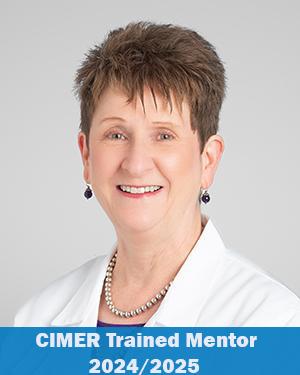Research Technology & Services
Light Microscopy Core
-
Light Microscopy Core
- About
- Services
- Equipment
- Grant & Publications
About Us
For those requiring basic light microscopy the Core will help determine appropriate staining protocols and offer training and/or assistance in acquiring transmitted and fluorescent digital images with wide-field microscopes. Those requiring optical sectioning capability to better resolve their samples can receive training and assistance in the use of confocal and multi-photon microscopes. Whole slide scanning can be done in brightfield or fluorescence mode. Two Laser MicroDissection instruments are available for isolating small areas of tissue or even single cells. Total Interference Reflection Fluorescence (TIRF) microscopy is available for visualizing and quantifying cellular events localized at the basal plasma membrane. Live cell and tissue imaging can be done on both wide-field and confocal microscopes equipped with environmental chambers for heat/CO2 control.
In addition to the microscopy services, investigators also have access to Image Processing and Analysis workstations with a variety of advanced software for extracting quantitative data from their images. They can also generate images and movies for presentations, grants and publications.
The Core is home to 2 LI-COR Odyssey, laser-based scanning systems for gels, Westerns, in-cell Westerns, ELISA/FLISA, EMSA/Gel Shift, Protein Detection, etc. It makes use of the inherent sensitivity of the near-infrared spectrum, reduces autofluorescence, and enables direct detection (no film, darkroom, substrates).
Contacts




Services
The imaging specialists in the Core are dedicated to helping you obtain the best quality images that answer your scientific questions. We provide training on our microscopy instruments or we offer complete imaging services. We can assist with experimental design, image acquisition, troubleshooting, image analysis and the development of novel image analysis methods.
Widefield Microscopy
For imaging fixed samples, the Core provides microscopes equipped for transmitted light and fluorescence microscopy. Digital images are captured with high-resolution cameras. Large specimens can be imaged in their entirety with either transmitted or fluorescent light using an automated slide scanner or a stereomicroscope.
Live Imaging
Living specimens in culture (flasks, dishes or multi-well plates) can be imaged using transmitted light, phase contrast, DIC or fluorescence modes. Inverted microscopes are equipped with heat/CO2 incubators and motorized stages for capturing multiple time-lapse fields simultaneously. Widefield systems use high-resolution cameras in both transmitted light and fluorescence modes. Confocal/multiphoton systems use specialized photon detectors to capture high resolution fluorescence images.
Confocal Microscopy
"Optical sections" or "Z Stacks" of samples can be obtained on confocal microscopes. The stacks can be reconstructed with software that allows 3-D visualization and analysis. The microscopes are each equipped with multiple lasers for fluorescence excitation at a wide variety of wavelengths. This allows users to visualize multi-labeled components of a specimen simultaneously to compare the three-dimensional relationships between them. For example we can visualize fluorescently labeled proteins and compare the quantity and localization relative to other labeled cellular components.
Multiphoton Microscopy
This technology provides three-dimensional optical sectioning similar to that produced by a confocal, but because it uses longer wavelength light it is less damaging and can penetrate up to half a millimeter into tissue. It is ideal for imaging living specimens especially when deep imaging is required. It can be used for tissue sections employing simultaneous multiple IR wavelengths. With its combination conventional/resonant scanner the microscope can run in either slow scan mode for optimal spatial temporal resolution or fast mode (16,000 lines per second) for imaging rapid dynamic cell events.
Slide Scanning
Large specimens on slides that are labelled with either conventional histologic dyes or with fluorescent markers can be imaged in their entirety using high-resolution slide scanners.
Multispectral Slide Scanning
Whole slide multispectral imaging (up to 9 colors) for visualizing, analyzing, quantifying, and phenotyping cells in situ in Formalin Fixed Paraffin Embedded (FFPE) tissue sections and TMAs.
Observation of Cells under Shear Flow
Microfluidics for cell analysis under shear flow – mimicking physiological flow in human vasculature. Cells are first cultured in biochips. The chips (with the resulting cell monolayers) are mounted on the stage of a live-imaging microscope and attached to a pump that introduces the flow of solution containing cells. Interactions between the cells in the fluid and those immobilized in the chamber can be imaged and quantitated.
Laser Microdissection/Laser Capture
Precise excision and capture of cell groups, single cells or even parts of cells out of tissue sections or cultures. Such explants can be used for RNA, DNA or protein analysis.
Total Interference Reflection Microscopy (TIRF)
Fluorescently tagged molecules adjacent to a glass surface can we imaged with 70nm resolution. It is ideal for studying events in the plasma membrane of living cells with high axial resolution.
Stereomicroscope
Imaging of large unmounted samples with brightfield and/or fluorescence illumination.
Infrared Western Blot Scanner (Odyssey)
Scanning of protein gels, Western Blots and In-Cell Western Assays using infra-red illumination to increase sensitivity and reduce autofluorescence.
Image Analysis/Quantitation
Post-acquisition processing and image analysis using high-end workstations and powerful software packages. Services include:
- Color segmentation of fluorescent and histochemical samples
- Customized quantitation (area, diameter, integrated intensity, etc.)
- Automated quantitation (batch processing) of large image stacks
- Analysis of colocalization
- Filtering and processing images for grants, papers, seminars, etc. See Equipment tab for software available
- Training in the use of these software applications
- Processing and/or analysis by Core staff on a case-by-case basis
Equipment
The Imaging Core has two Leica upright microscopes for capturing images from fixed specimens on slides in transmitted light (i.e. brightfield, phase contrast, differential interference contrast, darkfield) or fluorescence. They are equipped with high-resolution cameras for both black & white as well as color imaging. All microscopes are equipped with a full range of Chroma filters for imaging a broad range of fluorescent tags and proteins. They also are equipped with a complete range of objective lenses from 1.25X dry up to 100X water and oil immersion.
Upright
- Leica DM5500B upright microscope equipped for Fluorescence, Brightfield, Phase Contrast, Differential Interference Contrast and Darkfield microscopy (Leica Microsystems, GmbH, Wetzlar, Germany)
- Fluorescence image acquisition using Leica DFC 7000 GT monochrome camera (Leica Microsystems, GmbH, Wetzlar, Germany)
- Brightfield color image acquisition using a Leica DFC425C color camera (Leica Microsystems, GmbH, Wetzlar, Germany)
- LASX software for image acquisition
- Fluorescence X-Cite XYLIS Broad Spectrum LED Illumination System (Excelitas Canada Inc, Canada)
- Leica DM6B upright microscope equipped for Fluorescence, Brightfield, Phase Contrast, Differential Interference Contrast and Darkfield microscopy (Leica Microsystems, GmbH, Wetzlar, Germany)
- Fluorescence image acquisition using Leica DFC 7000 GT monochrome camera (Leica Microsystems, GmbH, Wetzlar, Germany)
- Brightfield color image acquisition using a Leica DMC4500 color camera (Leica Microsystems, GmbH, Wetzlar, Germany)
- LASX software for image acquisition
- X-Cite XYLIS Broad Spectrum LED Illumination System (Excelitas Canada Inc, Canada)
Inverted
- Leica DMI6000 (Leica Microsystems, Wetzlar, Germany) equipped with:
- Full range of objectives from 10X to 100X
- SOLA Light Engine (Lumencor, Inc. USA)
- ImageEM C9100-13 EMCCD monochrome camera (Hamamatsu, Bridgewater, N.J.)
- ORCA-Flash 4.0 CMOS monochrome camera (Hamamatsu, Bridgewater, N.J.)
- Temperature Controller and CO2 Incubation Chamber (PeCon GmbH, Erbach, Germany)
- Motorized scanning stage
- LASX software for image acquisition
- Leica DMI6500 (Leica Microsystems, Wetzlar, Germany) equipped with:
- Full range of objectives from 10X to 100X
- 100W EL6000 Metal Halide Illuminator (Leica Microsystems, Wetzlar, Germany)
- ImageEM C9100-13 EMCCD monochrome camera (Hamamatsu, Bridgewater, N.J.)
- ORCA-R2 CMOS monochrome camera (Hamamatsu, Bridgewater, N.J.)
- Temperature Controller and CO2 Incubation Chamber (Leica Microsystems, Wetzlar, Germany)
- Motorized DMI 127x83 scanning stage
- LASX software for image acquisition (Leica Microsystems, Wetzlar, Germany)
- Leica DMI6000 (Leica Microsystems, Wetzlar, Germany) equipped with:
- Full range of objectives from 2.5X to 100X
- X-Cite XYLIS Broad Spectrum LED Illumination System (Excelitas Canada Inc, Canada)
- ImageEM C9100-13 EMCCD monochrome camera(Hamamatsu, Bridgewater, N.J.)
- Leica DFC 7000T color camera (Leica Microsystems, Wetzlar, Germany)
- Temperature Controller and CO2 Incubation Chamber (Live cell pathology Devices Inc,)
- Motorized DMI 127x83 scanning stage
- LASX software with navigator module for image acquisition (Leica Microsystems, Wetzlar, Germany)
Those requiring optical sectioning capability to better resolve the fluorescence in their samples can receive training and assistance in the use confocal and multiphoton microscopes that allow for 3-D visualization and analysis.
For confocal microscopy, the Imaging Core has three systems configured to accommodate both fixed and live cells/tissues. Each instrument is equipped with multiple detectors and lasers to allow for visualization of multi-labeled components of a specimen. Captured images reveal the three-dimensional relationships between them. For example we can visualize fluorescently labeled proteins and compare the quantity and localization relative to other labeled cellular components.
- Leica TCS-SP8-AOBS Confocal (inverted) equipped with:
- Five lasers for confocal excitation at 405, 458, 476, 488, 514, 561, 594 and 633 nm wavelengths
- Five detectors: 4 HyD detectors and 1 PMT
- Spectrophotometer (detects light from 350-800 nm in 5 nm increments)
- Both Conventional and Resonant scanners for scan rates from 400-16,000Hz
- Leica LMT 2000 Motorized Scanning Stage
- Oko Environmental control for live imaging (OKOLAB USA Inc. CA)
- Transmitted light detector
- LAS- X Software with FRAP module for image acquisition (Leica Microsystems, Wetzlar, Germany)
- HyVolution 2- Huygens-Leica data exchange and real-time deconvolution server with Huygens Software for Deconvolution (Scientific Volume Imaging b.v.,Netherlands)
- Leica TCS-SP8-AOBS Confocal (inverted) equipped with
- Five lasers for confocal excitation at 405, 458, 476, 488, 514, 561 and 633 nm wavelengths
- Five detectors: 4 HyD detectors and 1 PMT
- Spectrophotometer (detects light from 350-800 nm in 5 nm increments)
- Conventional scanners for scan rates from 400-1200 Hz
- Leica LMT 2000 Motorized Scanning Stage
- Transmitted light detector
- Leica Application Suite X Software (Leica Microsystems GmbH, Wetzlar, Germany)
- HyVolution 2 -Huygens-Leica data exchange and real-time deconvolution server with Huygens Software for Deconvolution (Scientific Volume Imaging b.v., Netherlands)
- Leica TCS-SP5II-AOBS Confocal high-speed upright microscope equipped with:
- Five visible lasers for confocal excitation at 405, 458, 476, 488, 496, 514, 561, 594 and 633 nm wavelengths
- 5 internal spectral detectors (4 Hybrid and 1 PMT)
- Spectrophotometer (detects light from 350-800 nm in 5 nm increments)
- Both Conventional and Resonant scanners for scan rates from 400-16,000Hz
- Motorized Scanning Stage
- Environmental control for live imaging
- Gas anesthesia unit
- Transmitted light Dodt contrast detector
- 20X, 25X and 40X water immersion lenses with long working distance
- Objective piezo for fast z-stack acquisitions
- LAS-AF Leica Application Suite Software (Leica Microsystems, GmbH, Wetzlar, Germany)
Confocal microscopes are limited in their ability to view more than 100um into a specimen. To image more deeply, the Core has a multiphoton system that is able to image 500um or more depending on the tissue. It can be used for tissue sections employing simultaneous multiple IR wavelengths. With its combination of conventional/resonant scanner it can run in either slow scan mode for optimal spatial temporal resolution or fast mode (16,000 lines per second) for imaging rapid dynamic cell events.
Leica TCS-SP5II-AOBS Confocal/Multiphoton high-speed upright microscope equipped with:
- Five visible lasers for confocal excitation at 405, 458, 476, 488, 496, 514, 561, 594 and 633 nm wavelengths
- Coherent Chameleon Vision II Ti:Saphire laser with Optical Parametric Oscillator (OPO) for multiphoton excitation from 680-1300nm.
- 5 internal spectral detectors (4 Hybrid and 1 PMT)
- Spectrophotometer (detects light from 350-800 nm in 5 nm increments)
- 2 channel external HyD detectors for multiphoton
- 2 channel external reflected light NDD detectors
- 2 channel transmitted light NDD detectors
- Both Conventional and Resonant scanners for scan rates from 400-16,000Hz
- Motorized Scanning Stage
- Environmental control for live imaging
- Gas anesthesia unit
- Transmitted light Dodt contrast detector
- 20X, 25X and 40X water immersion lenses with long working distance
- Objective piezo for fast z-stack acquisitions
- LAS-AF Leica Application Suite Software (Leica Microsystems, GmbH, Wetzlar, Germany)
Large specimens (tissue sections) on slides can be imaged in their entirety with either transmitted or fluorescence light using a slide scanner or a microscope that produces tiled mosaic images.
- Leica Aperio AT2 Slide Scanner (Leica Microsystems, GmbH, Wetzlar, Germany)
- Brightfield image acquisition
- 5x, 20x, 40x magnification
- standard (1 x 3”) slides
- 0.25 um/pixel resolution at 40X
- Dynamic focusing/Autofocus
- 400 slide autoloader
- Leica DM6B upright microscope equipped for Fluorescence and Brightfield microscopy (Leica Microsystems, GmbH, Wetzlar, Germany)
- Fluorescence or brightfiels image acquisition using Leica 7000T color camera (Leica Microsystems, GmbH, Wetzlar, Germany)
- 100W EL6000 Metal Halide Illuminator (Leica Microsystems, Wetzlar, Germany)
- Motorized DM 127x85 scanning stage
- Capable of scanning standard, double and jumbo slides
- LASX software with navigator module for image acquisition (Leica Microsystems, Wetzlar, Germany)
Dishes and organs can be imaged with the Leica MZ16 FA stereomicroscope. This instrument allows the sample to be seen in three dimensions and has a long working distance so that larger specimens can be arranged, (dissected, if necessary), and imaged.
Leica MZ16FA motorized stereomicroscope equipped for Fluorescence, Brightfield, and Darkfield Microscopy (Leica Microsystems, GMbH, Wetzlar, Germany)
- Fluorescence illuminator
- Leica KL1500 LCD Epi illuminator (Leica Microsystems, GMbH, Wetzlar, Germany)
- IsoPro 6 X 4 manual XY stage
- Brightfield color image acquisition using a Leica DMC4500 camera. (Leica Microsystems, GmbH, Wetzlar, Germany)
- ORCA-R2 CMOS camera (Hamamatsu, Bridgewater, N.J.)
- LASX software for image acquisition (Leica Microsystems, Wetzlar, Germany)
With this microscope one can image fluorescently tagged molecules adjacent to a glass interface with 70nm resolution. It is ideal for studying events in the plasma membrane of living cells with high axial resolution.
Leica AM TIRF MC System (Leica Microsystems, Wetzlar, Germany) equipped with:
- 405nm, 488nm, 561nm, and 633nm Lasers
- Full range of Apochromatic objectives from 5X-100X
- 63X and 100X TIRF objectives
- 100W EL6000 Metal Halide Illuminator (Leica Microsystems, Wetzlar, Germany)
- ImageEM C9100-13 EMCCD camera (Hamamatsu, Bridgewater, N.J.)
- Orca-R2 ER-150 CCD camera (Hamamatsu, Bridgewater, N.J.)
- Temperature Controller and CO2 Incubation Chamber (Leica Microsystems, GmbH, Wetzlar, Germany)
- Motorized scanning stage
- LASX software for image acquisition (Leica Microsystems, Wetzlar, Germany)
The Core has two different microscopes equipped with integrated cutting lasers for precise excision and capture of cell groups, single cells or even parts of cells out of tissue sections or cultures without touching or contaminating them. Such excised samples can be used for RNA, DNA or protein analysis.
- Leica LMD7000 laser microdissection microscope (Leica Microsystems, Buffalo Grove, IL) equipped with:
- 1W Nitrogen laser with 349nm output
- Full range of objectives from 1.25X to 40X
- Leica DFC310 FX camera
- Fluorescence Prior Lumen 200 Illuminator (Prior Scientific, Inc. MA.)
- ArcturusXT Laser Capture Microscope (ThermoFisher, Waltham, Massachusetts, USA) equipped with:
- Nikon Eclipse Ti-E microscope
- Solid-state near-IR (810 nm) laser
- Solid-state, passive-switched, diode-pumped (355 nm) laser
- LED illumination system
- 2X, 10X, and 40X Nikon CFI60 objectives
- Motorized stage, trackball-actuated in X and Y axes with 1um precision
For cell analysis under shear flow – mimicking physiological flow in human vasculature – the Core has the microfluidics system of Cellix Ltd. Cells are first cultured in an incubator using biochips and flow chambers attached to a specially designed pump that provides the shear flow. The chips (with the resulting cell monolayers) are then attached to another pump that introduce flow into up to 8 separate tubes for up to 8 simultaneous assays. The chips are mounted on the stage of a live-imaging microscope for observation.
- The Cellix Microfluidics System (Cellix Ltd., Dublin, Ireland)
- Vena8 Biochips
- Kima Pump (for cell culture)
- Mirrus 2.0 Nanopump with Multiflow8 manifold
- Venaflux software
Highly multiplexed immunostained samples have significantly expanded the range of metrics collectable from tissue sections providing quantitative assessment of cellular phenotype and activity in a way that is similar to flow cytometry. More importantly, these new techniques provide tissue context and information about cell-to-cell interactions that is crucial for understanding intact tissue dynamics.
The Vectra Polaris system provides whole slide multispectral imaging (up to 9 colors) for visualizing, analyzing, quantifying and phenotyping cells in situ in Formalin Fixed Paraffin Embedded (FFPE) tissue sections and TMAs.
- Vectra Polaris Imaging system (Akoya Bioscience,Marlborough, MA)
- Multispectral range 440-780nm
- Brightfield and Fluorescence (multispectral or color)
- 80 slide capacity with continuous loading technology
- Separates up to 9 fluorescence colors, even if overlapping
- Magnification: 10x, 20x, 40x
- InForm Software (Akoya Bioscience, Marlborough, MA)
- Phenochart software (PerkinElmer/Improvision, Inc., Waltham, MA)
- HALO software (Indica labs, Albuquerque, NM)
The Core has 2 LI-COR Odyssey, laser-based scanning systems for gels, in-cell Westerns, ELISA/FLISA, EMSA/Gel Shift, Protein Detection, etc. It makes use of the inherent sensitivity of the near-infrared spectrum, reduces autofluorescence, and enables direct detection (no film, darkroom, substrates).
The Core provides software so that users can open and analyze data on computers in their lab.
Odyssey CLx Infrared Scanning Systems (LI-COR Biosciences, Lincoln, Nebraska)
- Solid-state diode lasers (680 nm and 780 nm)
- Silicon avalanche photodiode detectors
The Core provides Workstations where clients can use leading image rendering and analysis software to do:
- Color segmentation of fluorescent and histochemical samples
- Customized quantitation (area, diameter, integrated intensity, etc.)
- Automated quantitation (batch processing) of large image stacks
- Analysis for colocalization
- Filtering and processing images for grants, papers, seminars, etc. See Equipment tab for software available
- Training in the use of these software applications
- Processing and/or analysis by Core staff on a case-by-case basis
Dell Workstations (Dell, Round Rock, TX) are available with the following imaging applications/software:
- Image-Pro Plus (Media Cybernetics, Inc., Rockville, MD)
- Image-Pro 10 (Media Cybernetics, Inc., Rockville, MD)
- Volocity (3D Imaging Software) (PerkinElmer/Improvision, Inc., Waltham, MA)
- InForm Software (Akoya Bioscience,CA)
- HALO software (Indica labs, Albuquerque, NM)
- Photoshop (Adobe Systems, Inc., San Jose, CA)
- Huygens Software for Deconvolution (Scientific Volume Imaging b.v., Netherlands)
Grant & Publications
The Imaging Core provides a wide range of advanced imaging and scientific consulting resources in the areas of Light Microscopy, Electron Microscopy, Histology and Immunohistochemistry/FISH for investigators throughout Cleveland Clinic. The primary mission of the facility is to assist investigators in producing high-resolution images of cells and tissues using light and electron microscopy.
For those requiring basic wide-field light microscopy the Core will help determine appropriate staining protocols and offer training and/or assistance in acquiring transmitted and fluorescent digital images with wide-field microscopes. The Imaging Core has two Leica upright microscopes for capturing images from fixed specimens on slides in transmitted light (i.e. brightfield, phase contrast, differential interference contrast, darkfield) or fluorescence. They are equipped with high-resolution cameras for both black and white as well as color imaging. All microscopes are equipped with a full range of Chroma filters for imaging a broad range of fluorescent tags and proteins. They also are equipped with a complete range of objective lenses from 1.25X dry up to 100X water and oil immersion. Living specimens in flasks or culture dishes can be observed on inverted microscopes equipped with high-resolution cameras and motorized stages for capturing multiple time-lapse fields simultaneously. Images can be collected in both transmitted light and fluorescence modes. These microscopes can also be used for scanning multi-well plates in their entirety.
Those requiring optical sectioning capability to better resolve the fluorescence in their samples can receive training and assistance in the use confocal and multiphoton microscopes that allow for 3-D visualization and analysis. For confocal microscopy, the Imaging Core has three systems configured to accommodate both fixed and live cells/tissues. Each instrument is equipped with multiple detectors and lasers to allow for visualization of multi-labeled components of a specimen. Captured images reveal the three-dimensional relationships between them. For example, fluorescently labeled proteins can be imaged to compare the quantity and localization relative to other labeled cellular components. Since confocal microscopes are limited in their ability to view more than about 100 um into a specimen, the Core has a multiphoton system that is able to image 500um or more depending on the tissue. It can be used for tissue sections employing simultaneous multiple IR wavelengths. With its combination of conventional/resonant scanner it can run in either slow scan mode for optimal spatial temporal resolution or fast mode (16,000 lines per second) for imaging rapid dynamic cell events.
Total Internal Reflection Fluorescence microscopy is available to image fluorescently tagged molecules adjacent to a glass interface with 70nm resolution. It is ideal for studying events in the plasma membrane of living cells with high axial resolution.
The Core has two different laser microdissection systems equipped with integrated cutting lasers for precise excision and capture of cell groups, single cells or even parts of cells out of tissue sections or cultures without touching or contaminating them. Such excised samples can be used for RNA, DNA or protein analysis.
The Core has 2 LI-COR Odyssey, laser-based scanning systems for gels, in-cell Westerns, ELISA/FLISA, EMSA/Gel Shift, Protein Detection, etc. It makes use of the inherent sensitivity of the near-infrared spectrum, reduces autofluorescence and enables direct detection (no film, darkroom, substrates). The Core provides software so that users can open and analyze data on computers in their lab.
Large specimens (tissue sections) on slides can be imaged in their entirety with either transmitted or fluorescence light using a slide scanner or a microscope that produces tiled mosaic images. Dishes and organs can be imaged with the Leica MZ16 FA stereomicroscope. This instrument allows the sample to be seen in three dimensions and has a long working distance so that larger specimens can be arranged (dissected, if necessary) and imaged.
For cell analysis under shear flow – mimicking physiological flow in human vasculature – the Core has the microfluidics system of Cellix Ltd. Cells are first cultured in an incubator using biochips and flow chambers attached to a specially designed pump that provides the shear flow. The chips (with the resulting cell monolayers) are then attached to another pump that introduce flow into up to 8 separate tubes for up to 8 simultaneous assays. The chips are mounted on the stage of a live-imaging microscope for observation.
Image Processing and Analysis Workstations are available where clients can use leading image rendering and analysis software such as Image-Pro Plus (Media Cybernetics, Inc., Rockville, MD), Image-Pro 10 (Media Cybernetics, Inc., Rockville, MD), Volocity (3D Imaging Software) (PerkinElmer/Improvision, Inc., Waltham, MA), InForm Software (Akoya Bioscience,CA), HALO software (Indica labs, Albuquerque, NM), Photoshop (Adobe Systems, Inc., San Jose, CA), Huygens Software for Deconvolution (Scientific Volume Imaging b.v., Netherlands) to do:
- Color segmentation of fluorescent and histochemical samples
- Customized quantitation (area, diameter, integrated intensity, etc.)
- Automated quantitation (batch processing) of large image stacks
- Analysis for colocalization
- Filtering and processing images for grants, papers, seminars, etc. See Equipment tab for software available.
- Training in the use of these software applications
- Processing and/or analysis by Core staff on a case-by-case basis
Highly multiplexed immunohistochemistry (IHC) methods (available in the Core) have significantly expanded the range of metrics collectable from tissue sections providing quantitative assessment of cellular phenotype and activity in a way that is similar to flow cytometry. More importantly, these new techniques provide tissue context and information about cell-to-cell interactions that is crucial for understanding intact tissue dynamics. The Vectra Polaris system provides whole slide multispectral imaging (up to 9 colors) for visualizing, analyzing, quantifying, and phenotyping cells in situ in Formalin Fixed Paraffin Embedded (FFPE) tissue sections and TMAs.
Getting Started
View prices and request services through iLab. Register for an iLab account and visit the desired core's page to get started.
Questions? Contact Us